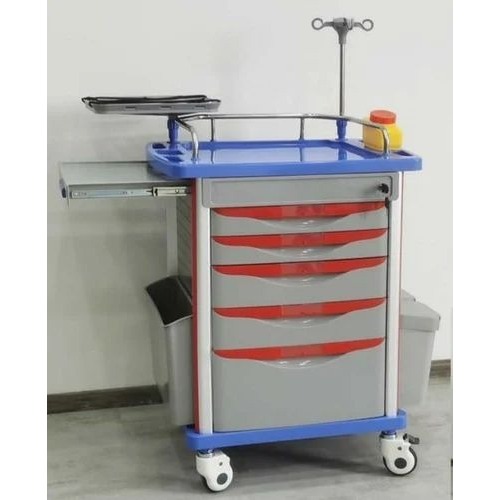Resuscitation Equipment: Emergency trolleys are equipped with bag-valve masks, endotracheal tubes, and laryngoscopes for airway management and ventilation. Cardiac Monitoring: ECG monitors, defibrillator pads, and electrodes are vital for assessing and monitoring cardiac rhythms during emergencies.
The basics of a crash cart trolley: An emergency cart is used to transport and dispense emergency medications and supplies. It is essential for cardiopulmonary resuscitation as it contains advanced cardiac life support (ACLS), first-line drugs, a defibrillator, a bag valve mask, and a suction device.
crash cart checklist: a cart stocked with emergency medical equipment, supplies, and drugs for use by medical personnel especially during efforts to resuscitate a patient experiencing cardiac arrest.
All crash cart contents should be listed on an attached laminated sheet or card, including expiration dates where applicable. Attached to the front of each drawer should be a laminated alphabetical list of the drawer’s contents.
Nurses are responsible for checking the crash cart at every shift to ensure all contents are present and functioning properly. The crash cart and its contents must be maintained according to the hospital’s procedures to be properly equipped for emergency situations.
The use of crash cart in hospital: In conclusion, crash carts provide organized, readily accessible life-saving equipment and medications. Their design helps healthcare teams respond swiftly to critical situations, such as cardiac arrests or severe trauma, enhancing survival rates and supporting advanced cardiovascular life support protocols.
The crash cart policy in hospital: If the wards are big, one crash cart should be kept in every ward. In floor wise arrangement, one or two crash cart can be kept on each floor depending upon how big the floor is. One dedicated crash cart should be kept in areas like emergency, blood donation room, imaging department, day care and OPD areas.



Reviews
There are no reviews yet.